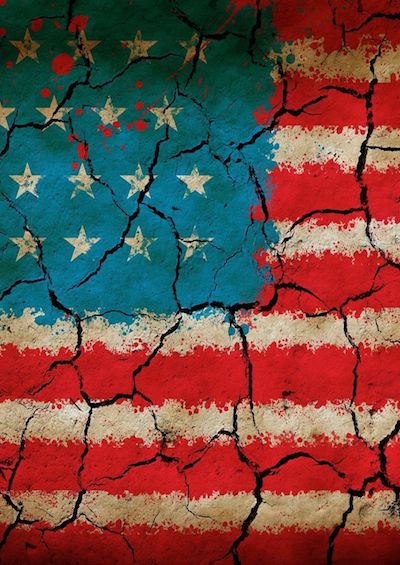From the American Challenge to the Chinese Challenge?
The unfolding Western effort to paint a picture of a benign America and a malign China is a distortion of the historical truth.
December 15, 2016
Next year, 2017, may go down in the annals of history as Year One of the new global order – or, perhaps more accurately, of the new global disorder.
The US on the sidelines?
The moment that best symbolizes the transition from the familiar old to the unfamiliar new was a little-noticed event, the APEC summit held in Lima, Peru, this November.
With TPP (Trans Pacific Partnership) dead (buried by President-elect Donald Trump), the sitting U.S. President (Barack Obama) made a hasty and rather embarrassed appearance at the summit.
Meanwhile, Chinese President Xi Jinping basked in the limelight. Beijing, Xi declared, would henceforth be the guarantor of the global trade regime.
With Trump’s promise (one which, judging by his cabinet appointments, he is likely to keep) to renege on the Paris climate change agreement, Xi also proposed to take on the mantle of leadership in the environmental domain.
2003 as the year of departure
These events did not, of course, occur suddenly. They have been building up since the beginning of this century.
Two events in particular, both in 2003, can be seen as triggering American decline:
- On the geopolitical front, it was the invasion of Iraq
- On the geo-economic front, it was the abandonment of the WTO rules-based multilateral trade regime at the ministerial meeting in Cancún, Mexico – a choice which now reaches its full impact under Donald Trump.
In the meantime, China’s economic ascension is astonishing. Throughout modern history, it long figured only as a steady victim of Western and Japanese imperialism (beginning with the first Opium War in 1839). In the Cold War, it became an ostracized nation, but also one that shut itself out.
China, the relentless globalizer
China’s economic comeback, generated by the reforms launched in 1979 by Deng Xiao-ping, is one of the most remarkable defining discontinuous events of modern history.
China is now moving from a nation primarily aiming to attract inward direct foreign investment to becoming the world’s major outward foreign direct investor (in terms of investment flows, not accumulated stocks).
China has gone global big time. There is not a country where China does not have a significant presence — whether it is in building infrastructure in Swaziland or acquiring high-tech seeds firms (Syngenta) in Switzerland.
50th anniversary of “The American Challenge” book
In the kind of chronological coincidence that delights historians, 2017 will also mark the 50th anniversary of what was at the time a seminal book (translated into 15 languages) by the French author Jean-Jacques Servan Schreiber (known as JJSS) entitled “Le Défi Américain” (The American Challenge).
In essence, the thesis of the book was that in the economic rivalry between Europe and the United States, Europe was completely outclassed on all fronts: management techniques, technological tools and research capacity.
Lesson then and now: Adapt and learn – or perish
Servan-Schreiber’s prescription was not immediate surrender. He argued that those firms (or indeed countries) would survive and flourish that would respond effectively to the challenge, mainly by adjusting to and learning from the American challenge.
He proved to be quite correct. One important response to meeting this challenge was INSEAD, the famous French business school. It was established as a dynamic response to the challenge, so that European business managers might learn (then) superior American management techniques.
The Chinese challenge is very different from the American challenge. The Chinese do not possess (at least, not yet) superior management techniques, technological tools and research capacity.
The new challenge: Coping with Chinese characteristics
What we will see instead is a new form of challenge, one which bears distinct Chinese characteristics.
What that means exactly remains to be seen and will unfold in the decade or two to come.
In all probability, the concept of China as the Middle Kingdom will revive. This stands in opposition to the principles enunciated in the Peace of Westphalia (1648) and the equality of states.
A hierarchical world
China’s view of the world, and indeed of society, is far more hierarchical. The New Silk Road and Maritime Route – known in China as OBOR, one belt one road – is an early illustration and indicator of globalization with Chinese characteristics.
So disturbed is the West by this turn of events that there is a widespread assumption that China will in all likelihood prove to be a malign power, in contrast to American benign hegemony. That is why what ought to be the Chinese challenge is often presented as the Chinese threat.
China, all of humanity and the (small) Western world
Three things must be said at the outset:
- It would be absolutely churlish not to welcome and admire the fact that China has quite brilliantly succeeded in rising from poverty to prosperity. In the course of the decades following Deng’s initial reform, close to three-quarters of a billion Chinese rose above the poverty line.
- The erstwhile global powers bear a heavy responsibility for the previous impoverishment of China.
- As to the Chinese “threat,” Western powers are evidently applying two different yardsticks – one that applies to China and the other to our own, no less troubling deeds.
At a minimum, we in the West ought to recognize that no great global power has risen without war and other forms of brutal suppression.
What came before China’s “sins”?
The U.S. list of engaging in such suppression is long and multi-varied. It rose by
- Committing genocide against the native Amerindian populations
- Widespread use of slavery to work in plantations
- The import of indentured Chinese “coolie” labor to build railroads
- War against Mexico
- Interventions in Central America
- The transformation of the Caribbean Sea into an American lake.
This imperialist pattern continued well into the period referred to as Pax Americana.
Different yardsticks?
When Mao’s People’s Liberation Army was victorious in 1949 against the U.S.-backed regime of Chang Kai-shek, Washington’s response was to have the People’s Republic of China (PRC) ostracized from the international community. This benefitted the Republic of China (ROC) under the dictatorship of Chang Kai-shek.
While Taiwan has become a democracy recently, it certainly was not one in the years of unwavering American support.
Indeed, prior to the October 1949 “Liberation,” in February 1947, a massacre occurred in Taiwan in which possibly as many as 30,000 were executed perpetrated by Chang’s regime.
There were no U.S.-sponsored sanctions or condemnations of violations of human rights, unlike what there were after the Tiananmen massacre of June 1989.
Illustrations of U.S. interventionism to pursue imperialist ends throughout the decades of Pax Americana are plentiful.
This is not to say that Pax Americana was exclusively malign. Over the years, U.S. rule had immense benefits, such as preventing the continuation of Nazi Germany, Fascist Italy, Militarist Japan or indeed the Soviet Union.
Nevertheless, what we must part with is the a priori assumptions that, whereas the American challenge was universally rather benign, the Chinese challenge will be malign; these assumptions are ill founded and could prove counter-productive.
It is in this spirit that I provided the examples of less than benign U.S. behavior on the international stage. In fact, they are parallel to what the West fears now coming from China, with so far, barring the possible exception of the South China Sea dispute, no actual evidence.
Peaceful – for now
Whether China succeeds in its “peaceful rise” remains to be seen. However, while outcomes will very much depend on developments in China, they will also depend on how China is received.
The “défi chinois” (Chinese challenge) should be met dynamically and constructively. All efforts must be made by all to ensure that China’s rise is indeed peaceful.
In that context, one must note that, on balance and in comparison with other rising powers, so far China’s rise has been remarkably peaceful.
Meanwhile, the unfolding Western effort to preach to the Chinese and paint a picture of a shining and benign America and contrasting that with a threatening and malign picture of China is, among other things, a complete distortion of the historical truth.
Takeaways
China is positioning itself to be the guarantor of the global trade regime in the environmental domain.
There is not a country in the world where China does not have a significant presence.
China’s view of the world is very hierarchical. It does not believe in the equality of states.
The New Silk Road Route – known in China as OBOR – exemplifies globalization with Chinese characteristics.

